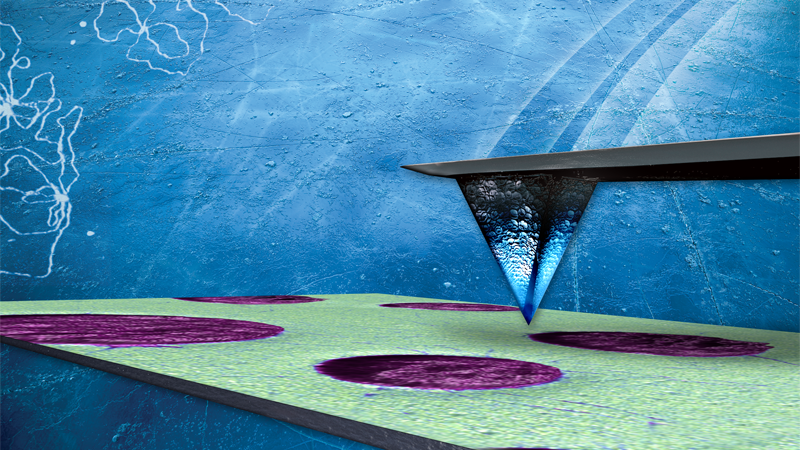FASTForce Volume
Traditional Force Volume is a trusted technique used extensively in biomechanical investigations. Researchers interested in how molecules and cells respond to mechanical stimuli or exert forces on their environments can turn to AFM to obtain highly accurate Force-Distance Measurements in a two-dimensional array. Force variations and topography images are obtained, along with individual force curves at any point.
Bruker’s FASTForce Volume extends the traditional technique to ramp rates exceeding 100Hz while maintaining pN trigger forces. This accelerates image acquisition by more than 10x and closes the gap to the frequencies employed by PeakForce Tapping®. As a result, the combination of FASTForce Volume and PeakForce Tapping allows investigation of mechanical properties on ramp rates from sub-Hz to several kHz, on soft biological samples as well as polymers and other materials.
FASTForce Volume + PeakForce QNM High-Accuracy Kit
When used together with the PeakForce QNM® high-accuracy kit, the new FASTForce Volume also provides quantitative nanomechanical data out of the box, without any need of a reference sample. Bruker’s precalibrated probes, their integration into the workflow in the software, and the availability of property maps real-time and off-line in FastForce Volume mode enable acquisition of this calibrated data without added complexity.
Force Volume Mapping now includes real-time and offline quantitative property calculations. Calculations include DMT modulus, tip-sample adhesion, and the Sneddon modulus model, ideal for soft biological samples.
Force Volume is a valuable legacy technique in Bruker’s Nanomechanics Package. Force Volume users will want to explore the game-changing new mode, PeakForce QNM.
FASTForce Volume CR
Contact resonance (CR) is a variation on FASTForce Volume where the cantilever is oscillated through its resonant frequency while in contact with the sample. An amplitude versus frequency plot is created that contains a peak with its maximum at resonance. These contact resonance spectra can be analyzed to obtain dissipation (proportional to peak width Q) and stiffness (proportional to peak location f).
FASTForce Volume CR is not operating in contact mode like traditional contact resonance measurements, thus significantly reducing wear on the tip. This enables reliable and repeatable measurements even on very stiff materials.
We very much like FASTForce volume. We’re impressed by the speed and accuracy of the force curves. We easily ramped from 10 up to 150 Hz with appropriate cantilevers on living cells, and the curves looked very good with flat baselines and decent pixel density.
Sébastien Janel, Institut Pasteur de Lille


